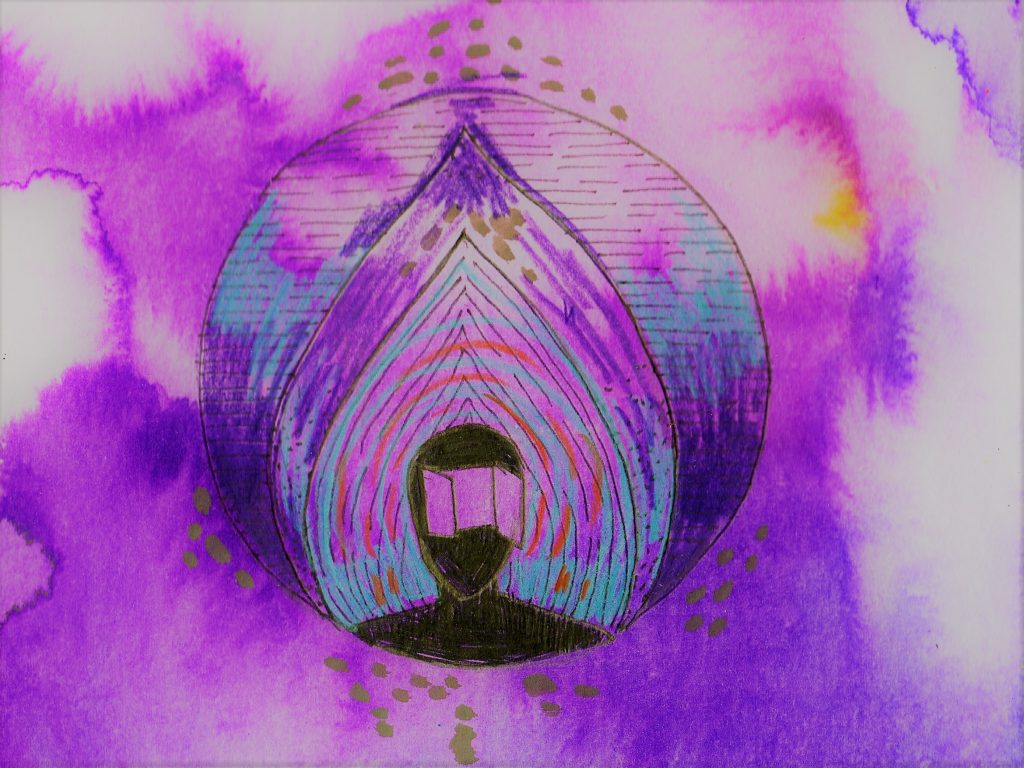Since I really enjoy working with clients through imagination, I decided to detail the process in an article. What can imagination bring to our lives, how can it be enriching for us and is imagination for everybody?
First it is probably good to explain what the word imagination means. The dictionary describes it as the ability of a person to mentally recall images, pictures and fantasies.

Now it is important to mention the difference between passive and active imagination. The latter is more frequently used in psychology (especially in depth psychology).
While in passive imagination our conscious mind and ego are quite involved in creating fantasies and the images are more like a flow of pictures, in active imagination we are meeting and conducting a dialog with our unconscious self. We are actively entering in the realm of our soul. So let’s begin.

What is imagination good for? How can I benefit from it?
All of us occasionally have to deal with life situations when we do not know what to do, when it is somehow hard to decide or when we are unsure of our acts.
Anxiety, health issues or simply feeling that something prevents us from fully enjoying life … each of us can look for different solutions but it is often in those moments that it is good to remind ourselves about our inner resources.
The ones we own and possess, I mean namely the power of our unconscious.
Inside of us we all very well know what we need, what is best and most important for us.
But our ego and consciousness are biased, and “what” is missing for completeness and health in those moments is hidden in our subconscious.

How to reach it? Active imagination is here to help establish a connection with our inner wisdom, with our unconscious.
Through imagination and thanks to the knowledge we extract from it we can prepare for difficult situations in life. Imagination allows us to live more fully and to be more aware.
In fact after contacting and continuously working with our unconscious, our own soul can “advise”: where to go, what is good for us.
What’s more imagination has beneficial effects on developing creativity.
Often my clients are claiming they do not have imagination and fantasy, so this method is not for them. But all of us have this skill!
Growing up and socialization made us lose this natural ability to produce images and to connect with our inside advisers.
However, like children, all of us are capable of reconnecting with our imagination. In those cases it is good not to be discouraged and keep trying so as to train.
Really, all of us have this ability to imagine!

What are the benefits from imagination?
Imagination definitely helps developing autonomy, a much bigger independence on surrounding happenings and opinions, a stronger inner anchor, support and trust in oneself.
In other words, it increases self-confidence and the development of individuality.
Reaching wholeness allows the personality to flourish and does not solely rely on what the ego and rational conscience can influence.
Listening to these inner parts which are usually “switched off” leads to the feeling of leading a more fulfilled life. That is how better knowledge, understanding and gaining insight happen.

It is established that the communication with one’s own unconscious enables the processing and integration of experiences from this realm into the conscious.
If at the beginning it is good to start this journey with the help of a psychotherapist, one should try to keep doing this as it turns out those experiences are often the support we are looking for in our lives.
Imagination lets us connect our right and left brain hemispheres so that it is possible to find an inner peace, balance, and to better cope with emotions.
This deals with change, and is not just an inner change. This dialogue has an external impact.
On top of that, responsible acting is enabled based on this inner autonomy.
And that is exactly what we gain when meeting with our inner advisers, rather than relying on outer authorities.

How imagination happens? What do I need? Specific instructions
A relaxed state is needed to step into imagination. Relax your body and mind. Concentrate on your heart beat, focus your attention on your breathing. Let everyday concerns and ideas float away.
Once in a relaxed state, try to visualize a staircase which counts twenty steps and walk them down. At the bottom of the staircase picture a door, on which you can either knock or go through. This transition can be a tool to get to the “threshold” of the unconscious.
Which images did appear before your mind’s eyes? Try to fully perceive what you see, what you feel and describe what is happening in the picture. Then step into it.

You can partly influence your imagination theme. For instance, you would like to get your unconscious to advice on a specific question.
This is possible. Ask yourself directly why “that particular thing” bothers you and let your unconscious reveal the image into which you will then actively slip into.
For example, ask what you want to know to the person who appeared in your image. It may not be a person, it may take another form.
Indeed, imagination is good to establish a relationship with “anything” that emerges from your mind: an inanimate object, a plant or an animal.
There is only one recommendation: try to refrain yourself from pulling in a person you know in your conscious life, or associate this person to a character, or more generally an entity that will stand for him or her in your imagination journey.

In active imagination, one cannot go beyond real life capabilities.
So it will not be possible to fly or have the aptitudes one experiences in fantasies and fabricated stories.
The range of themes tackled during an imagination session is creating conscious contact and communication with this image.
Act with respect and do not exceed half an hour with this counterpart. If something is unfinished, do agree that you will meet again in the next-induced imagination session.
Working with the unconscious is a continuous process.
It seems important to mention that you can even bring physical symptoms into your imagination sessions: corporeal pain, a disease you suffer from, or other problems.

Also if you have a recurring dream and cannot explain why, imagination would allow coming back to it and actively taking part in it.
This way you can see what you actually dreamt off and what your unconscious wants to express.
The last step is to let out experiences gathered from imagination, to prepare to understand them.
Write them down, paint or otherwise transfer your observations back into consciousness.
If you work with a therapist, you can discuss your imaginative encounters and get some assistance interpreting and understanding them within your own context and life story.
Unconscious communicates with you and this language of symbols and their elucidation is therefore more based on intuition than rationality. As one gets to know him or herself better, this symbolic representation gets easier to translate, understand and connect to life.
As a matter of fact working with a psychotherapist is always a great help to comprehend the symbolic language and its interpretations.

The whole process can only be completed by a healthy and structured personality, especially if one aims at following that path alone.
I always recommend to be guided at least for the first few sessions. Ideally by somebody who has knowledge and is well versed in deep and dynamically-oriented psychotherapy.
Indeed, such a professionally trained person can help with specific procedures, understanding and liaising with symbolic images while describing you the meaning of these “imaginative visits.”

If you are interested in the imagination topic, you can read the book by Verena Kast “Imagination as space of freedom – Dialogue between the ego and the unconscious“.
Another reading by Andrey Davydov, “From Carl Gustav Jung’s Archetypes of the Collective Unconscious to Individual Archetypal Pattern“, is based on the work and research of the founder of the Active Imagination concept, C. G. Jung.
Still based on Jung’s legacy, James A Hall’s “Jungian Dream Interpretation” or Arnold Mindell’s “Dreambody: the body’s role in revealing the self” are important works in dream symbolism and understanding.

Last but not least the American psychotherapist Steve Gallegos wrote about imagination and links it to speaking in public.
He developed the personal totem method that allows healing inner injuries using animal imagination.
More about Mr. Gallegos’ imaginative techniques can be found in the following video: https://www.youtube.com/watch?v=i2nU18PRgnI

